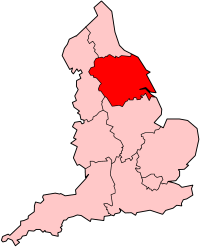There are some connections between intellectual property and ballet which I discussed in some detail in "Cracking Nuts - Copyright in Choreography". That article was my excuse to review David Nixon's "Nutcracker" in my IP North West blog on 24 Nov 2011. As Yorkshire folk don't like to read stuff that's been served up before I have to think of something new now. Having squeezed the Massine v de Basil lemon dry in my other article I've decided to review Northern Ballet's "Beauty and the Beast" which I saw at The Grand Theatre in Leeds last night. I shall also mention some of the company's services to Yorkshire business as well as some of things that Yorkshire business can do for Northern Ballet.
Beauty and the Beast is not an easy story to choreograph. Scottish Ballet had a go with Thea Musgrave's score many years ago. I reviewed for "Aien" (St Andrews University student newspaper) when it was premiered at The King's Theatre in Edinburgh in 1969. Ballet Cymru also seems to have had a version in its repertoire. Another link with IP, incidentally, since Ballet Cymru is based in Newport, the same town as the Intellectual Property Office. And, of course, there is the Birmingham Royal Ballet's version. But none of those versions has ever achieved the popularity of works like Coppelia, Giselle, Nutcracker, Sleeping Beauty or Swan Lake. Will David Nixon's version do any better? The answer is that I am just not sure.
Beauty and the Beast has an awkward story line with two sets of main characters:
- Prince Orian who gets turned into a wild beast; and
- a King Lear type figure with three daughters (one of whom is "Beauty") who are turned out of their house by the bailiffs as a result of the girls' extravagance and end up in an old bus in a forest where the old man gets mugged by the beast.
There are also strong roles for good and wicked fairies and the beast's steward. There's also a mishmash of music from Bizet, Poulenc and Saint-Saëns. No wonder my companion (a considerable artist in her own field) and I asked ourselves what was going on in the interval.
Beauty and the Beast is also a very big ballet demanding a very big stage for Duncan Hayler's set. The Grand is an intimate theatre not ideally suited for ballet and its stage did not do it justice.
As for Nixon's choreography the first two acts reminded me of early McMillan - works like Anastasia which are not performed very often nowadays for a reason. But the last Act reminded me of Balanchine and I think it was that Act which saved the ballet. The pas de deux between Beauty - danced exquisitely by Martha Leebolt - and the beast showed just what the choreographer can do. Also impressive were Victoria Sibson and Hannah Bateman who danced the fairies, Hironeo Takahashi, the beast's servant and the coryphées, Michela Paolacci, Ayana Kanda, Christie Duncan and Isabella Gasparini who were four sprites. The last Act of the ballet could well stand as a work in its own right. I hope to see that Act many times again but I would happily skip the first two acts with its old bus and bailiffs.
Before I turn to Northern Ballet's business services and how to sponsor a dancer, I should mention I-Candy, a gorgeous confiserie, patisserie and ice cream parlour a few doors down and on the same side of the road. My friend had one of their waffles with hot white chocolate and I had some chocolate cheesecake thereby undoing all the good work in the gym a few hours earlier. Well it is Christmas.
Now back to business. Northern Ballet's building can be hired for conferences, exhibitions and even a Girl Geek dinner. Are you listening Imran? You'd have a sell out. Here's a video about the place.
Businesses can also sponsor the company as a whole or indeed individual dancers. You will need a good IP lawyer for that. I shall certainly sponsor a dancer just as soon as I can. I hope that some of my readers - especially my patent and trade mark agent clients - will do the same.
Businesses can also sponsor the company as a whole or indeed individual dancers. You will need a good IP lawyer for that. I shall certainly sponsor a dancer just as soon as I can. I hope that some of my readers - especially my patent and trade mark agent clients - will do the same.
Happy New Year folks.




.png)
.png)



